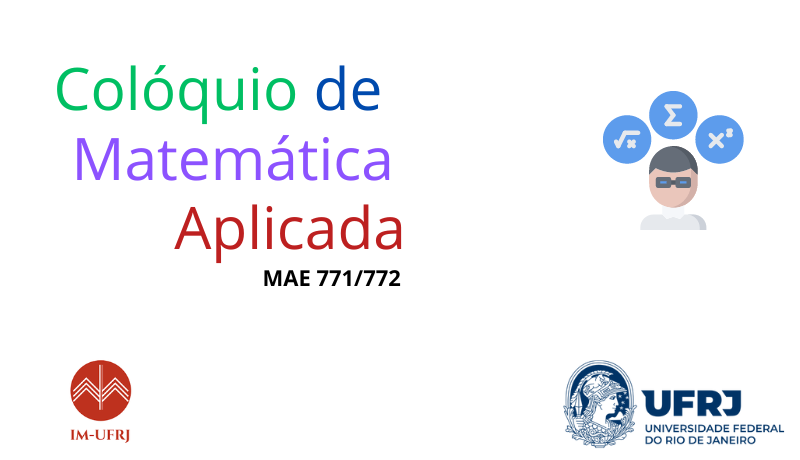
Título: Shadowing versus Finite Shadowing in Linear Dynamics.
06 de Setembro, às 15:15 p.m. (Rio de Janeiro local time)
Palestrante: Nilson C. Bernardes Jr
Local: Instituto de Matemática sala C-116
Resumo: The shadowing property is one of the most important concepts in the modern theory of dynamical systems and differential equations. It originated with works by Anosov, Bowen and Sina ̆ı from the late 1960s and early 1970s, leading to the famous shadowing lemma in differentiable dynamics, which asserts that a diffeomorphism has the shadowing property in a neighborhood of its hyperbolic set.
Given a discrete dynamical system (X, T) consisting of a metric space X and a map T : X → X, recall that a δ-pseudotrajectory of T, where δ > 0, is a finite or infinite sequence (xj)i<j<k in X (−∞ ≤ i < k ≤ ∞), with at least two terms, satisfying
d(Txj , xj+1) ≤ δ for all i < j < k − 1.
Recall also that T is said to have the finite shadowing property (resp. the positive shadowing property) if for every ε > 0, there exists δ > 0 such that every finite δ pseudotrajectory (xj)kj=0 (resp. every δ-pseudotrajectory (xj)j∈N0) of T is ε-shadowed by the trajectory of some x ∈ X, in the sense that
d(xj , Tjx) < ε for all j ∈ {0, . . . , k} (resp. for all j ∈ N0).
If T is bijective, then the shadowing property is defined by replacing the set N0 by the set Z in the definition of positive shadowing. In a certain sense, in a system with the shadowing property, computer-generated trajectories are close to real trajectories. From this computational point of view, the notion of finite shadowing seems to be even more relevant than shadowing, since computer-generated trajectories are actually finite pseudotrajectories.
It is well known that shadowing and finite shadowing coincide in the case of continuous maps on compact metric spaces, but this equivalence already fails on a certain locally compact subspace of the real line R [2].
Our goal is to investigate the possible equivalence between shadowing and finite shadowing in the setting of linear dynamics. Our main result asserts that the concepts of shadowing, positive shadowing and finite shadowing always coincide for invertible operators on Banach spaces. On the other hand, we exhibit examples showing that these three concepts may differ from one another in the case of the Fr ́echet space H(C) of all entire functions. Lecture based on Section 2 of the joint article [1] with Alfredo Peris.
[1] N. C. Bernardes Jr. and A. Peris, On shadowing and chain recurrence in linear dynamics,
Advances in Mathematics 441 (2024), Paper No. 109539, 46 pp.
[2] U. B. Darji, D. Gon ̧calves and M. Sobottka, Shadowing, finite order shifts and ultrametric
spaces, Advances in Mathematics 385 (2021), Paper No. 107760, 34 pp.

